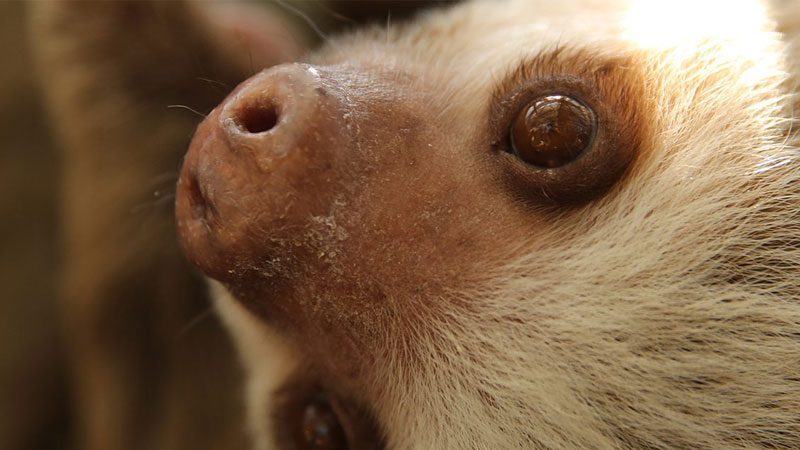Welcome to Lincoln Park Zoo’s new web app! Share your feedback

Hoffmann’s Two-toed Sloth
Regenstein Small Mammal-Reptile House
Did You Know?
- Sloths are one of the world’s slowest mammals. They maintain low body temperatures to help conserve energy.
- While some mistakenly believe sloths are relatives of primates, their closest living relatives are anteaters. They are also related to armadillos.
- While they are not well-adapted for moving on the ground, sloths are good swimmers. They may fall directly from trees into rivers.
Don’t See the Animals?
Why aren’t animals visible at all times? To promote positive animal welfare, we provide animals with choices. They can choose to spend time in areas that are out of public view.

Take an Animal Home with You
Overview
Scientific Name: Choloepus hoffmanni
Class: Mammals
Diet: Leaves, fruits, and tree sap
Range: Central and South America
Endangered Status: Least Concern
More Information
Hoffman’s two-toed sloths are brownish-gray with a small snout, rounded head, flat face, and small ears hidden in long fur. They may be up to 27 inches long and weigh just under 20 pounds. They sometimes appear greenish due to algae growing on their back, which helps them camouflage in trees.
These are solitary animals that spend almost their entire lives in trees. They sleep up to 20 hours a day and often remain still even when awake. They are vulnerable on the ground in part due to their weak hind legs. These sloths may have multiple mates and give birth (after an 11-month gestation) while hanging in trees. Young sloths cling to their mothers for the first five weeks of life. Females reach maturity at age 3, while males do so at age 4 or 5.
